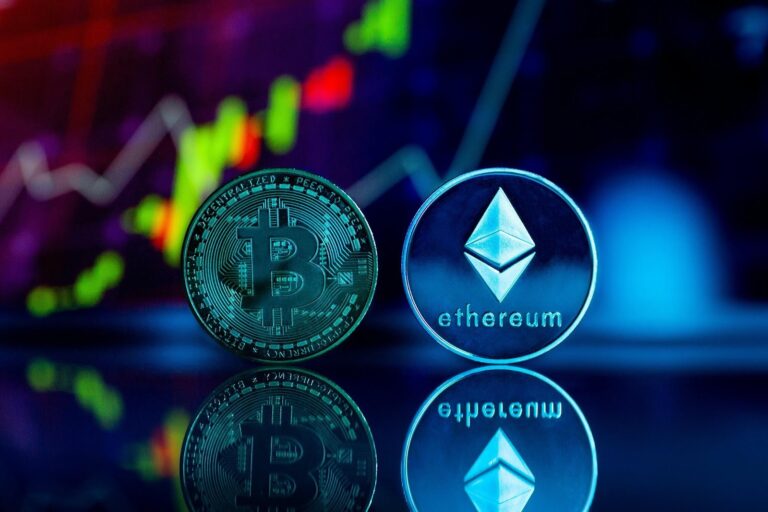The realm of digital currencies extends far beyond Bitcoin, with “altcoins” representing an expansive and diverse spectrum of cryptocurrencies. In this comprehensive guide, we delve into the essence of altcoins, exploring their various forms, functionalities, and the innovative role they play in the evolving landscape of digital finance.
Whether you’re a seasoned crypto enthusiast or a newcomer to the field, this article aims to enrich your understanding and navigate the intriguing world of altcoins.
What Are Altcoins?
The term “altcoin” encompasses every digital currency aside from Bitcoin, encapsulating a vast array of cryptocurrencies each with unique characteristics and purposes.
Originating from the phrase “alternative coin,” altcoins emerged as counterparts to Bitcoin, offering diverse functionalities and technologies. These coins maintain the decentralized essence of digital currencies, with most leveraging blockchain technology to secure and validate transactions.
How Many Altcoins Are There?
As per the latest data from CoinMarketCap, the crypto space is home to over 9,400 altcoins, a figure that’s continually growing. Although these numerous altcoins collectively account for half of the market’s total value, Bitcoin remains the dominant player.
Ethereum, another significant altcoin, holds about 14.5% of the market’s value, underscoring the immense worth of the altcoin sector, which stands at around $1 trillion. This illustrates the vast and dynamic nature of the cryptocurrency industry as a whole.
The Different Types Of Altcoins
The cryptocurrency market’s trillion-dollar valuation is mirrored in the variety and innovation within the altcoin sector. These digital currencies are categorized based on their unique functionalities and objectives, ranging from payment processing to privacy enhancement.
- Payment-Focused Altcoins: Designed as digital mediums of exchange, these altcoins aim to enhance transaction efficiency. Litecoin (LTC) and Bitcoin Cash (BCH) are prime examples, often regarded as improved versions of Bitcoin;
- Protocol-Focused Altcoins: These altcoins foster a creative environment for developers to build decentralized applications (dApps), smart contracts, and even new cryptocurrencies. Ethereum (ETH), Tron (TRX), and Neo (NEO) exemplify this category, offering platforms for technological advancement in blockchain;
- Privacy-Focused Altcoins: Catering to the demand for discreet transactions, privacy-focused altcoins enable fully encrypted and anonymous transfers. While sometimes associated with questionable uses, they echo Bitcoin’s original vision of privacy. Monero (XMR), Zcash (ZEC), and Dash (DASH) are notable for their emphasis on transactional privacy.
Stablecoins: The Balancers in a Volatile Market
Stablecoins have emerged as a cornerstone in the digital currency arena, offering stability in a typically turbulent market. Their value, anchored to fiat currencies like the US dollar, provides a dependable and less volatile option for those involved in digital currency transactions.
Notable examples include USD Coin (USDC) and Tether (USDT), each maintaining a consistent 1:1 value ratio with the US dollar. Beyond fiat currencies, some stablecoins also extend their pegging to commodities like gold or oil, offering diversified stability in the digital currency space.
NFTs: Unique Digital Assets
The rise of NFTs (non-fungible tokens) has been meteoric, grabbing headlines with record-breaking sales. These distinct digital assets represent one-of-a-kind items, ranging from digital and physical art to real estate and luxury goods.
Unlike other digital currencies, NFTs are not interchangeable; they maintain their uniqueness and carry their entire ownership history transparently on the blockchain. Their intrinsic value lies in their singularity and permanence, marking a new era in digital asset ownership and trade.
CBDCs: Digital Currencies Backed by Central Banks
CBDCs (Central Bank Digital Currencies) share similarities with stablecoins but are issued and regulated by national financial institutions. Pegged to a country’s native currency, they offer a stable digital currency experience without the usual market volatility.
Countries like China are pioneering in this field, having already initiated trials for their digital currency. CBDCs symbolize a significant stride in integrating digital currency systems with traditional financial structures.
Utility Tokens: Specialized Tokens for Specific Platforms
Utility tokens represent specialized digital currencies tailored for specific platforms or projects. They are often used for fundraising in the developmental stages of cryptocurrency projects or for accessing services within the project’s ecosystem.
Typically based on the ERC-20 standard, these tokens might grant access to exclusive features, such as advanced gaming levels or premium subscriptions, enhancing the user experience within the platform.
How to Get Altcoins
For those keen to dive into the altcoin market, apps like Tap provide a straightforward path to acquiring a range of altcoins. The app supports various cryptocurrencies, including prominent ones like Ethereum, Litecoin, and XRP. However, it’s essential to understand wallet compatibility:
- Bitcoin wallets cannot store altcoins like XRP;
- Ethereum wallets are not suitable for Tron;
- Always ensure the wallet chosen is compatible with the specific altcoin.
The Evolution of Altcoins
- Diverse Use Cases: Altcoins have evolved to address a variety of market needs, from improving transaction efficiency to enhancing privacy;
- Technological Advancements: Innovations in blockchain and cryptographic technologies have propelled the growth and diversification of altcoins;
- Market Impact: The introduction of altcoins has significantly expanded the cryptocurrency market, providing investors with a wider range of investment opportunities;
- Regulatory Landscape: As altcoins continue to grow, regulatory bodies worldwide are increasingly focusing on creating frameworks to ensure market stability and investor protection.
Investing in Altcoins
- Research and Analysis: Investors should conduct thorough research on altcoins, including their technology, market potential, and the team behind the project;
- Risk Assessment: Altcoin investments carry risks; understanding market volatility and project viability is crucial.
- Portfolio Diversification: Including a mix of altcoins in one’s investment portfolio can potentially spread risk and tap into different market segments;
- Staying Informed: Keeping abreast of the latest market trends, technological updates, and regulatory changes is vital for informed altcoin investment decisions.
Conclusion
Altcoins represent a dynamic and diverse segment of the digital currency ecosystem, offering innovative solutions and broadening the scope of blockchain technology. From stablecoins providing market stability to NFTs revolutionizing digital ownership, altcoins cater to a multitude of needs and preferences.
As the altcoin landscape continues to evolve, it presents both exciting opportunities and challenges, making it imperative for enthusiasts and investors to stay informed and cautious. Understanding the nuances of each altcoin category and carefully navigating the investment landscape is key to leveraging the potential of these digital assets.









